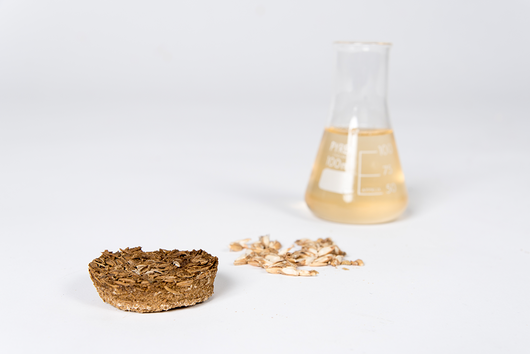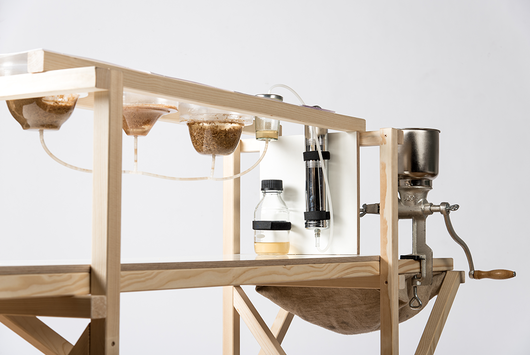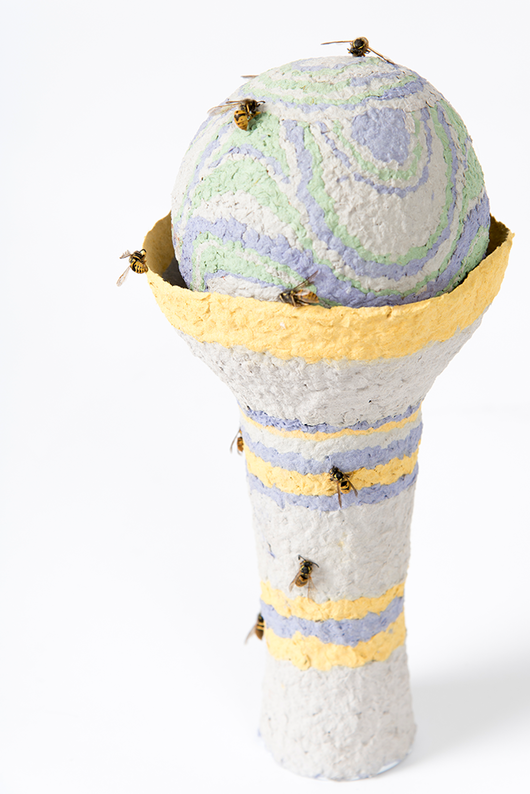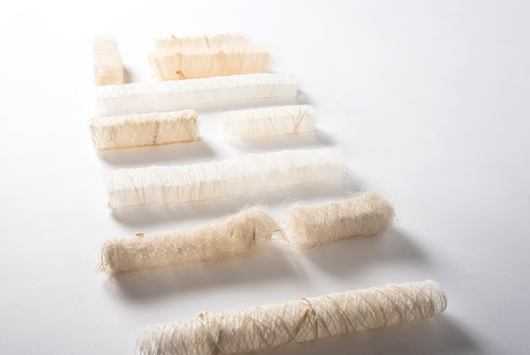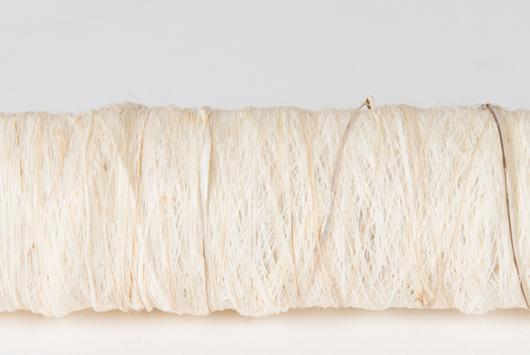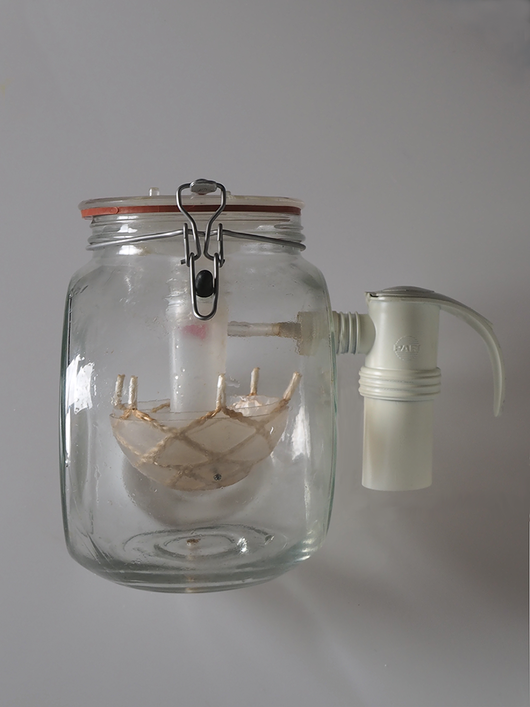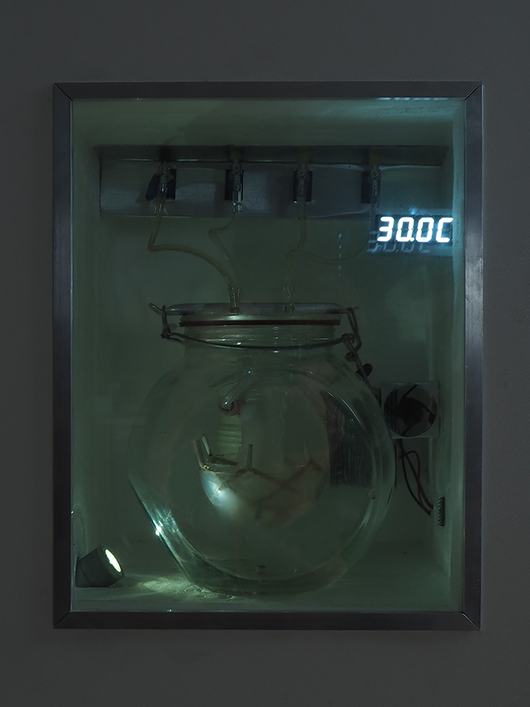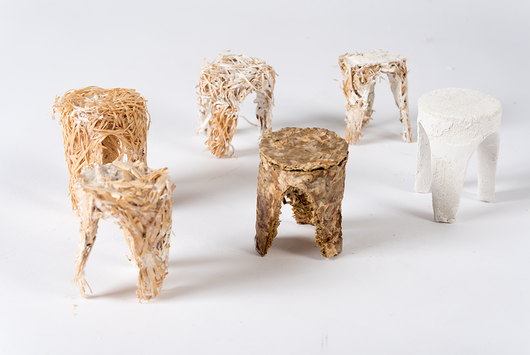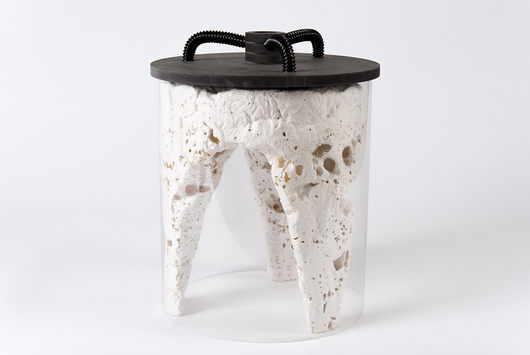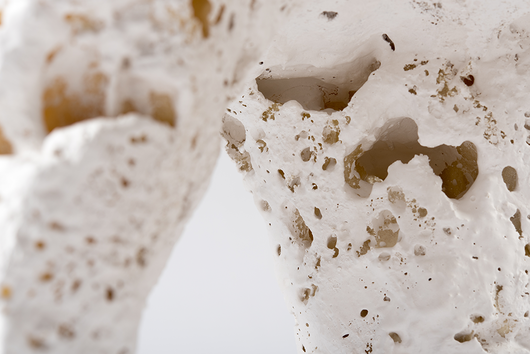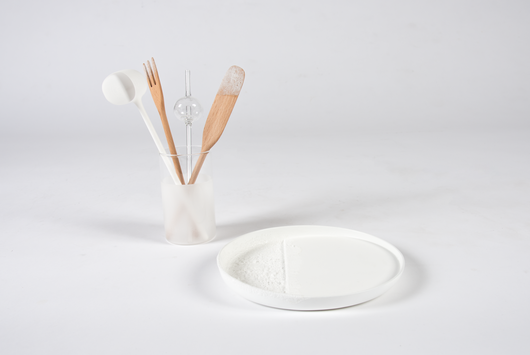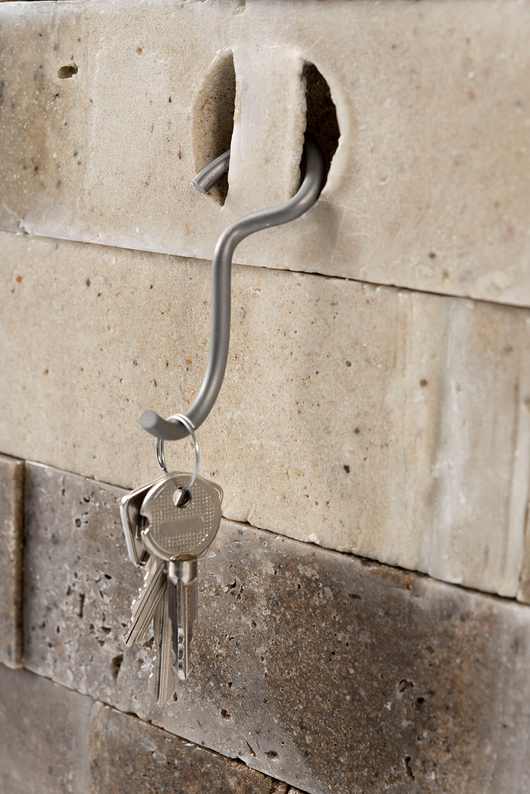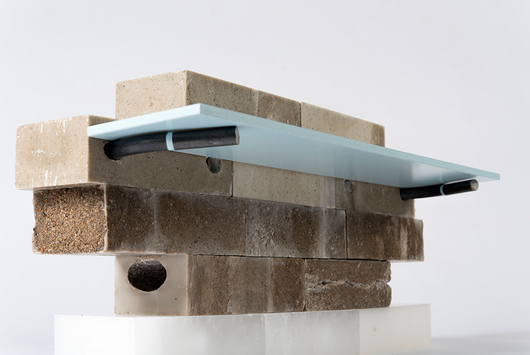microbes I – Bakterien produzieren Gestein
Semesterprojekt
Komplexes Gestalten, Wintersemester 2016/17
bei Prof. Mareike Gast, Karl Schikora und Dawei Yang
ab 3. Studienjahr Bachelor, ab 1. Studienjahr Master
Nachwachsende Materialien. Lebendige Herstellung. Gewachsene und weiter wachsende Konstruktionen. Lebendige Produkte.
Es geht um Mikroben, um Algen, Bakterien, Pilze, die im industriellen Kontext Einsatz finden. Wie sehen (nach-) wachsende Produkte aus? Wie der Entwurf und die Gestaltung? Wie lassen sich die Anpassungsfähigkeit, die Vielfalt und das rasante Wachstum der Mikroben einsetzen? Welche Prozesse und Produkte sind schon jetzt realisierbar? Vielfältige Antworten wurden in explorativen Experimenten, Konzeptionen und Diskussionen erarbeitet.
In diesem Projekt lag der Fokus auf Mikroben, die in der Lage sind, Gestein zu bilden. Wir experimentierten mit Bakterien, die Calciumcarbonat herstellen. Ganz neue Herausforderungen aber auch Möglichkeiten ergaben sich durch die Arbeit mit lebenden Organismen und dem Konzept Wachstum. Neue Verfahren wurden entwickelt, neue Anwendungen konzipiert.
Compact Chaff by Tony Beyer and Moyu Cao:
Chaff is a common leftover all over the world – from rice, from corn, from millet and other crops. Their often high content of silicon dioxide offers the possibility to turn them into fibre reinforced cement by biomineralisation in combination with calcium carbonate. The resulting material is different in different location depending on the kind of chaff, but the process is the same. We developed a simple and mobile tool that demonstrates the process and that makes it available to almost anybody.
co[w]work by Luis Undritz and Marc Wejda:
The production of bio-composites from waste materials from the dairy cow industry through the use of energy self-sufficient processes with the help of bacteria, enzymes and other biological substances – this is the aim of the co[w]work project. It shows two complete material chains completely derived from this industry’s waste:
The first concept harvests PLA as well as nutrients for calcium carbonate producing bacteria from whey, a by-product of the cheese industry. The eventually biomineralised PLA composite offers surprising properties.
The second concepts makes use of lignin derived from the manure. It is constructed by controlled wasps into ever so complex shapes. Also here the final biomineralisation by the bacteria allows sturdy and waterproof structures.
Tom Bade: Porifera_Mollusca
Porifera_Mollusca combines the most significant characteristics of shellfish and sponges and creates synthetic nacre – a biomineral, consisting to about 95% out of calcium carbonate. Porifera_Mollusca is an effort to create a process, in which structural and aesthetically valuable nacre is produced by bacteria, in any volume or shape.
The synthetic nacre produced here covers fiber and porous sponge structures resulting in lightweight, strong and graceful materials, that are compostable but still resistent to natural influences.
lime mycelium – symbiotic growing material by Ruben Strahl:
My concept suggests that fungal mycelium and bacterial calcium carbonate create a composite material that can grow in random forms in industrial standards. It is highly lightweight and stable and to hundred percent biodegradable. The nutritional supply orienting mushroom mycelium is used as a supporter for the stabilizing biomineralized lime crystals of Bacillus pasteurii.
The growth is symbiotic, because the fungi transports nutrients to the bacteria and the bacterial calcium carbonate stabilizes the mycelium. This allows the material to grow in air. Due to controlled fogged nutrients and oxygen flow inside the bioreactor, the growth can be influenced parametrically.
subliminals – nutrient supply & health care by bacteria by Andreas Wagner:
We eat genetic modified food, containing less nutrients than the original forms. On the other hand we drink drinks enriched with minerals and vitamins. In case of suffering from deficiency symptoms, we take pills to adjust our vitamin and nutrient household. Are there better ways of nutrient supply and health care?
The object family subliminals shows a prospektive alternative to common nutrient supply by pills or other medicines in a future of nutrient-poor food. The objects are satisfying your daily requirement of minerals – produced by bacteria. Ingesting nutrients in a new incidental way constantly, but also controllable and visible. The dosing of the different minerals is controlled by the objects themselves and their sizes of coated surfaces.
Marmelstein by Paulina Gellert and Anna Herbert:
Marmelstein is based on the Bio Brick – a biomineralised limestone, made by bioMason. We decided to combine their idea with different useful shapes inside of the stone, to give it a second value and to differentiate from a normal building stone. We developed a processing tool to create undercuts and organic shapes in the stone. The applications are mounting options, fixing possibilities and hollows to store small things inside the stone. For this purpose we used the technique of decomposing the limestone by using acetic acid. Due to that it is possible to create shapes that could not be formed by drilling, milling or moulding. Through a little hole the acid was inserted and then could be guided by specific movements to produce inner shapes. We can also imagine a user-friendly application, an acid-patch which can be attached at the required position. Targeted substance release makes it possible to reach the desired form. The
benefit of the Marmelstein would be customized manufacturing and an easy processing method. As one example to usefully apply the etching method, we worked on a flexible racking system and an integrated wall-hook.
Publikation microbes I+II hier bestellen >
mehr Inhalte zum Projekt hier >
und auf der microbes website
Publikation microbes I+II hier bestellen >
mehr Inhalte zum Projekt hier >
und auf der microbes website


